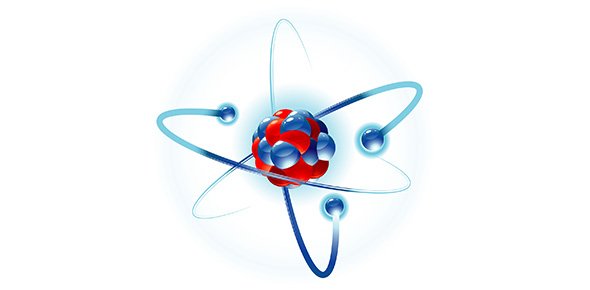Related Flashcards
Related Topics
Cards In This Set
| Front | Back |
|
Causes of Hypervolemia
|
1. Heart Failure2. Kidney Failure3. Sodium containing drugs (alka seltzer, fleet enema, IVF with NA)
All of these cause decreased perfusion of kidneys and/or decrease conversion of fluid into urine. Causes retention of fluid in vascular space |
|
What is Aldosterone and how does it work?
|
Aldosterone is a mineralcorticoid (type of steroid) made in adrenal glands.It Causes retention of Na and H20. Used if you are hypovolemicToo much = Cushings disease or hyperaldosteronism (Conn's)Too little = Addisons
|
|
What is Atrial Natriuretic Peptide and how does it work?
|
ANP is a hormone secreted by the atria when the atria become stretched from too much fluid volume in vascular space.It causes the EXCRETION of Na and H20. So it does the OPPOSITE of aldosterone
|
|
What is ADH and how does it work?
|
Anti-diuretic Hormone is made in the pituitary gland and it works to PREVENT DIURESIS. It retains H2O ONLY! Sodium does not follow water here.Too much: Syndrome of Inappropriate ADH Secretion (SIADH). Urine concentrated and Blood dilute.Too Little: Diabetes Insipidus = DIurese!! Urine is dilute and blood is concentrated Can go into HYPOVOLEMIC SHOCK!NOTE: any head injury or surgery...WOrry about Pituitary, ADH and possible hypovolemic shock
|
|
What happens to Urine specific gravity, sodium, and hematocrit in concentrated vs dilute blood/urine
|
Concentrated makes the numbers go UPDilute makes the numbers go DOWN
|
|
What is the exogenous form (drug version) of ADH
|
Vasopressin (Pitressin)Used as ADH replacement in Diabetes insipidus
|
|
S/Sx of fluid volume Excess
|
1. Distended neck veins2. Peripheral Edema3. Increased CVP measurement in right atrium if Swan, superior vena cava if central line4. crackles or wet lungs5. Poluuria6. Full and bounding pulse7. BP increase8. Increased weight
|
|
What is a normal CVP value?
|
2-6mmHg or5-10 cmH20
|
|
Tx for hypervolemia/ fluid volume excess
|
1. Na restriction2. I& O and daily wtsn (>2-3 lbs changes in 24 hrr are bad)3. Diuretics4. Bed rest- induces diuresis by stimulating ANP production and decreased production of ADH
|
|
Types of Diuretics and examples
|
1. Loop- Furosemide (lasix) or Burmetanide (Bumex)2 Thiazide- Hydrochlorothiazide (Thiazide)3. K-sparing- (spirolactone) Aldactone4. Osmotic - Mannitol
|
|
About Loop diuretics
|
1. Examples: Furosemide (lasix) and Burmetanide (Bumex)2. Indicated for the treatment of
edema associated w/ HF, renal or hepatic disease. Also used for the treatment of hypercalcemia
(increase the renal excretion of calcium) and hypertension. 3.* Monitor K+ and digoxin levels. * May be given with low renal perfusion. * Adverse effects include: dehydration, hypotension, hypokalemia, hyperglycemia, hyperuricemia, transient deafness.
|
|
About Thiazide Diuretics
|
Thiazide Diuretics
1. Common Examples:
Hydrochlorothiazide (HydroDiuril,
HCTZ)
2, Indicated for the treatment of hypertension, diabetes insipidus and edema associated with
steroid therapy, estrogen therapy, heart disease or liver
disease.
3. * Should only be given with adequate renal perfusion.
* Adverse effects include: Hypokalemia, Hypercalcemia,
Hyperglycemia, Hyperuricemia, HA and dehydration.
* HCTZ is contraindicated with known sensitivity to
Sulfonamides or Thiazides
|
|
About Potassium Sparing Diuretics
|
Potassium-Sparing Diuretics
1. Common Examples:
Spironolactone (Aldactone),
Triamterene (Dyrenium)
2. Indicated for the treatment of hypertension, hyperaldosteronism, and to reverse the potassium loss associated with diuretic induced hypokalemia
3. * Patients should avoid sodium substitutes, K+ supplements and foods high in K+ * Adverse effects include: Hyperkalemia, GI complaints,
dizziness and HA
|
|
About Osmotic Diuretics
|
Osmotic Diuretics
1. Common Examples: Mannitol (Osmitrol)
2. Rapidly working diuretics used for the treatment of early stage Acute Renal Failure (ARF), reduction of intracranial pressure and increased intr- ocular pressure as seen with Glaucoma.
3. * Multiple adverse effects, the most commonly seen serious adverse effects include: fluid and electrolyte imbalance, HA, marked diuresis and dehydration.
* Observe for rebound increased intra-cranial or intra-ocular
pressure. * May crystallize when exposed to low temperatures and should always be administered through a filter.
|
|
Causes of HYPOvolemia or Fluid Volume Deficit
|
1. Loss of Fluids from ANYWHERE2. Third spacing (i.e. burns, ascites)3.Diseases with polyuria (DI, DM) Polyuria --> Oligouria --> Anuria
|





